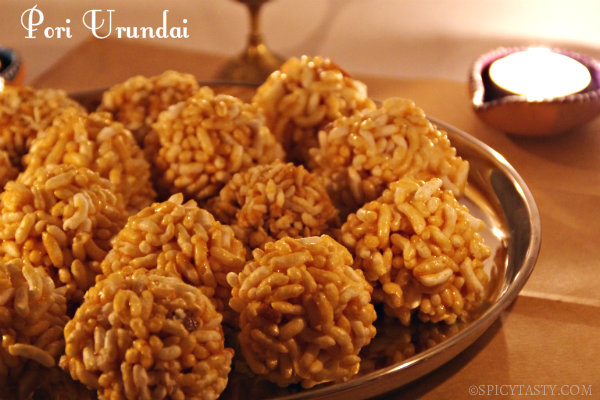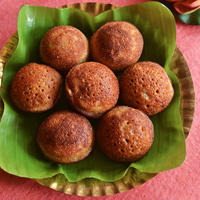Siva is worshipped as the elements in five temples in the South:
Space in Chidambaram
Water in Tiruvanaikkaval
Fire in Tiruvannamalai
Earth in Kanchipuram
Air in Sri Kalahasti (Andhra Pradesh)
Diwali is the festival that is associated with the lighting of lamps all over India. In the South however, Kaarthigai Deepam is the festival that is by name and concept connected to the lighting of the little earthen lamps.
Kaarthigai Deepam takes its name from the month (November-December) and star Kaarthigai on which this festival of lights occurs. It is celebrated over three days around the full moon day (Poornima), when the moon is in conjunction with the constellation Karthigai (Pleiades). This constellation appears as a group of six stars in the skies in the shape of a pendant dangling from the ear.
One of the earliest references to the festival is found in the Ahananuru, a book of poems that dates back to the Sangam Age (200 B.C. to 300 A.D.). The Ahananuru states that Karthigai is celebrated on the full moon day in the month of Karthigai. It was one of the most important festivals (peruvizha) of the ancient Tamils who were also part of modern Kerala. Avaiyyar, the famous poetess, refers to the festival in her songs.
The important days are called Annamalai Deepam and Sarvalaya Deepam.
Annamalai Deepam or Mahabharanidheepam, refers to the bright fire that is lit on top of a hill in the temple city of Thiruvannamalai.  The story related to this festival is that once to prove the supremacy amongst the trinity, Brahma and Vishnu took up the challenge of locating the top of the head and the feet of Lord Shiva. They failed in the task and Shiva appeared as a column of fire with no beginning or end. This jyothi (divine light) appeared on the hill of Thiruvannamalai. In commemoration, a huge lamp is lit at sunset on a hill top in this town, famous abode of Ramana Maharishi. This is the highlight of the festival and is known as AnnamalaiDeepam.
The story related to this festival is that once to prove the supremacy amongst the trinity, Brahma and Vishnu took up the challenge of locating the top of the head and the feet of Lord Shiva. They failed in the task and Shiva appeared as a column of fire with no beginning or end. This jyothi (divine light) appeared on the hill of Thiruvannamalai. In commemoration, a huge lamp is lit at sunset on a hill top in this town, famous abode of Ramana Maharishi. This is the highlight of the festival and is known as AnnamalaiDeepam.
Sarvalaya Deepam refers to the day when the karthigai deepam is lit in all the temples. Bonfires are symbolically lit in front of temples in the evening to signify Lord Shiva’s burning of the chariots of wicked demons who were troubling mankind.
Homes are cleaned and in the evening kolams are drawn in front of the houses and little clay lamps are placed as decoration on it. Lamps also decorate homes after a ritual lighting of all the lamps in the house and adeeparathanai inside the pooja-room. The lamps glow all over the streets. Clay oil lamps are usually lit outside around the house and brass and silver lamps are arranged inside homes. Holy places too are decorated with rows of lamps lit to brighten up the environment.
On the third day, a lamp is compulsorily lit at the back of the house where the garbage bin is kept and is called ‘kuppai karthigai’. The holistic approach of Hinduism to recognize and acclaim every aspect of daily life in prayer and worship is demonstrated by this little gesture.
The star Karthigai is also associated with Lord Muruga or Karthikeya.
The story of Lord Kartikeya’s birth is given in Kumar Sambhavam (the episode of Karthik Kumar). Sati, the consort of Shiva immolated herself in the Daksha Yagna, as she could not bear the insult to her husband. Siva was terribly grieved and began to dance his thandava of destruction. Then Shiva withdrew from the world and went into deep meditation in the Himalayas. Reborn as Uma Parvati, the daughter of the mountain king Himavaan (the Himalayas), she began to serve the Lord.
Meanwhile, the demon Surapadman ravaged the earth and tormented mankind. The Gods realized that only a son born of Shiva and Parvati could lead the gods to victory over Tarakaasuran, Surapadman and their demon vassals. They sent Kaama, the lord of love, to shoot a flower arrow at Shiva to make him fall in love with Parvati. Shiva opened his third eye and burnt Kaama to ashes instantly. Rathi, Kaama’s wife pleaded with Shiva and brought him back to life in reality for her but in a formless state for others.
Shiva fell in love with Parvathi but burning sparks of the fiery seed of Shiva were unbearable and even Agni could not bear them. These six embers were transported by the river Ganga into the Sara Vana, a forest and Sara Vana Bhava (Kartikeya) was born. He was raised by the six Kartikas. Parvati combined these six babies into one with six faces, ie. Shanmukha. Siva’s son then led the army of the Devas to victory against the demons.
Kartikeya known as Subramania, Skanda, Guha, Shadannana or Shanmukha (six faced one) represents a perfect person. As Muruga, he is also known as the God of Tamizh language. As God of war, he is the fiercest of all the Gods. While Ganesh removes all obstacles, Skanda bestows valour and courage. He is worshiped to solve problems related to Mars, especially Mangala dosha or Kuja dosha.
One of the oldest festivals celebrated in the south, Karthigai is a festival of lamps in Tamilnadu, Karnataka and Kerala. The lighted lamp is considered an auspicious symbol and believed to ward off evil forces and usher in prosperity and joy. While the lighted lamp is important for all Hindu rituals and festivals, it is an integral part of Karthigai.

When the light on the top of the Tiruvannamalai Hill is lit on the Kartigai Deepam day, people worship it. They recite “Harohara”, meaning that one who sees the light of lights burning eternally in the heart through constant meditation attains immortality. The light on the hill of Arunachala brings the message that the Self or Lord Shiva is radiance personified. He is the light of lights.
This festival commemorates the bonding between brothers and sisters in South India like Bhaiya-Dhuj and Raakhi. Sisters pray for the prosperity and success of their brothers and light lamps to illuminate the relationship and bonds.
Special food is cooked for the festival.  Puffed rice or pori is made into laddus with vellam or gur. Soaked rice, banana, coconut pieces and gur is made into a fine paste and cooked in ghee into round balls of delicious eats
Puffed rice or pori is made into laddus with vellam or gur. Soaked rice, banana, coconut pieces and gur is made into a fine paste and cooked in ghee into round balls of delicious eats  called Appam. As it is winter time, the vellam creates heat in the body. An adai or thick pancake/dosa is made with rice and all the dhals. This is a high protein food that also warms up the body to cope with damp and chilly atmosphere of November—December.
called Appam. As it is winter time, the vellam creates heat in the body. An adai or thick pancake/dosa is made with rice and all the dhals. This is a high protein food that also warms up the body to cope with damp and chilly atmosphere of November—December.
Leftover crackers from Deepavali are exhausted in this festival as a tribute to the war God Kartikeya.

This is a masterpiece. I wish that I could be in Tamil Nadu to celebrate.
LikeLike
Hi Padmum: Just attended the Murugan Skanda Shashti at our local temple here. It was fantastic! I would love to visit Thiruvannamalai soon; with Shiva’s Will it will happen. Nice informative article!
LikeLike